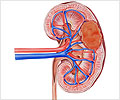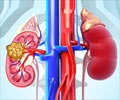Glossary
Adrenal Gland: Small hormone-producing glands located on top of each kidney.Ataxia: Loss of muscle coordination.
Birt-Hogg-Dubé Syndrome: A hereditary condition associated with multiple benign skin tumors, lung cysts, and a risk of both benign and malignant kidney tumors.
Catecholamines: Hormones such as dopamine, epinephrine, and norepinephrine produced by the adrenal glands.
Fovea: A small depression in the retina of the eye where visual acuity is highest.
Fundus: The interior surface of the eye opposite the lens, which includes the retina, optic disc, macula, and the fovea.
Hemangioblastoma: Tumors of the central nervous system that originate from the vascular system.
Hereditary Paraganglioma-Pheochromocytoma Syndrome: Rare hereditary neuroendocrine tumors of the adrenal glands and the sympathetic and parasympathetic paraganglia.
Macula: An oval yellowish area surrounding the fovea near the center of the retina in the eye, which exhibits the keenest vision.
Multiple Endocrine Neoplasia: A rare, inherited disorder in which several endocrine glands develop benign or malignant tumors or grow excessively without forming tumors.
Neurofibromatosis: A condition that causes tumors to form in the brain, spinal cord and nerves.
Optic Disc: Point of entry of the optic nerve at the back of the eye.
Pheochromocytoma: A hormone-secreting tumor that occurs in the adrenal glands.
Polycystic Kidney Disease: An inherited disorder in which clusters of cysts develop in the kidneys.
Retina: Light-sensitive layer of cells that form the inner lining of the eye.
Tinnitus: Ringing or buzzing sound in the ears.
Tuberous Sclerosis: A rare genetic condition that causes mainly benign tumors to develop in different parts of the body, most commonly in the brain, skin, kidneys, heart, eyes, and lungs.









